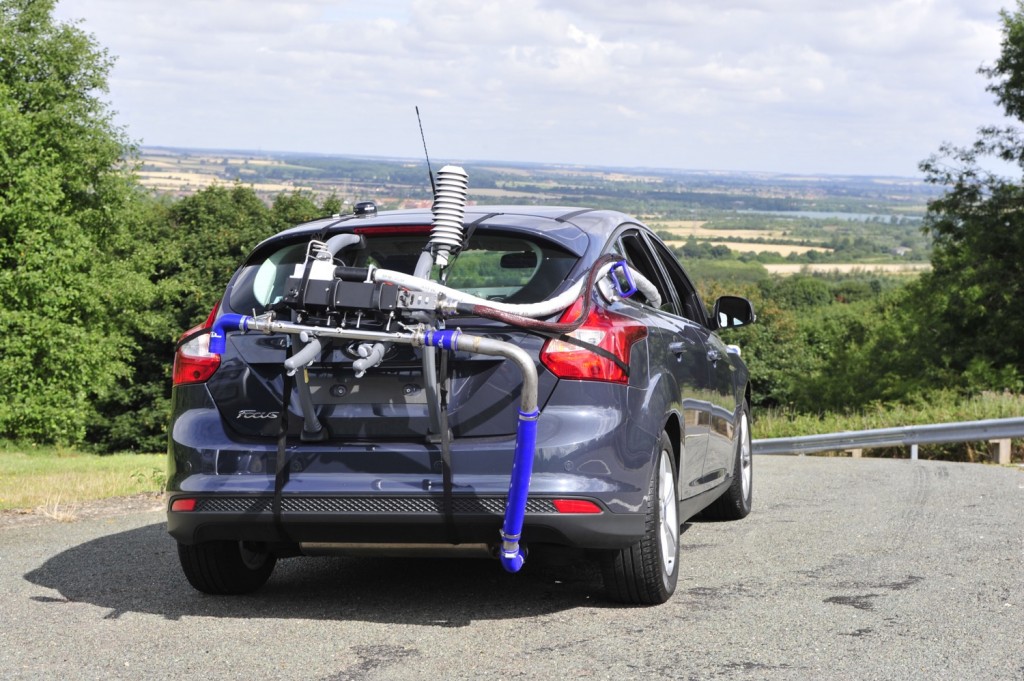From the U.S., we most often encounter European WLTP standards in the context of sizing up plug-in driving range for electric vehicles and plug-in hybrids that haven’t yet been rated by the EPA.
The Worldwide Harmonised Light-Vehicle Test Procedure, is however taking form as the most comprehensive emissions program in the world, replacing former New European Driving Cycle.
Given that context, for vehicles with tailpipes, Volkswagen deserves a hat tip for producing, last month, one of the easiest-to-understand video walk-throughs (featured at the bottom of this piece) of the WLTP program yet—especially when the new regulations and tests themselves were finalized in response to the Volkswagen diesel emissions scandal.
Compared to the New European Driving Cycle (NEDC) that it replaced, WLTP involves a more tightly defined test in all areas, and it’s brought downward adjustments for fuel efficiency and range of up to 20 percent, or about 16 percent on average.

Portable Emissions Measurement System (PEMS) (Photo by Millbrook Proving Ground)
What distinguishes the WLTP test, which was phased in starting in September 2018, is that in addition to dynamometer (machine-based) testing, vehicle compliance for nitrogen oxides and particulate matter (two of the offenders in the diesel scandal) is also measured in a real driving emissions (RDE) test.
More stringent evaporative emissions is another important part, especially for gasoline vehicles. At 95 degrees F, gas vehicles are kept in an enclosed container for twice as long as before with the same maximum for hydrocarbons.
WLTP and the new program makes compliance an ongoing process, rather than something that’s done at the start of production for a new model. VW says that during series production it will continue to test cars on the dynamometer for the WLTP cycle, “and will continue to do so throughout a model’s entire production time.”
The program includes follow-up emission checks on vehicles that are less than five years old, with the owner’s approval, as well as checks that the emissions still keep within the limits after about 62,000 miles (100,000 km). And from 2020 onwards, vehicles will have a lifelong fuel consumption monitor (FCM) that’s defined by the EU regulations and itself tested on the WLTP cycle.
The diesel scandal didn’t spur the same kind of stem-to-stern testing remake in the U.S. as it did in Europe. But the U.S. has stepped up supplementary tailpipe testing in response. On either continent, things will never be the same.












